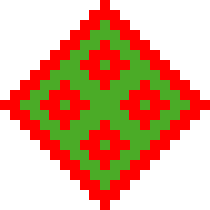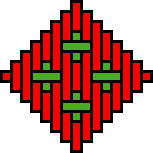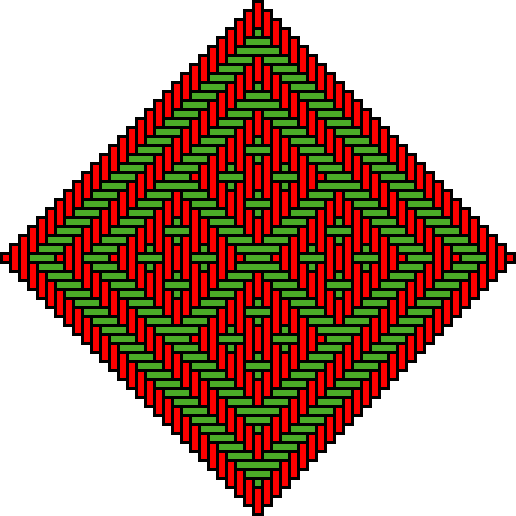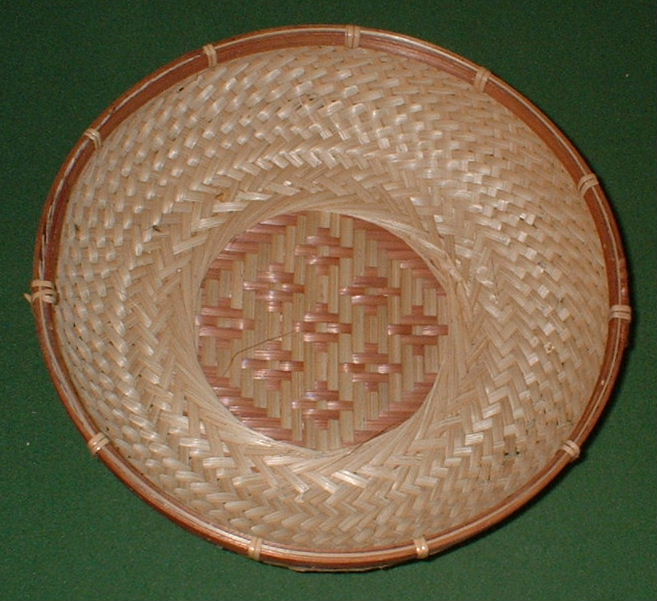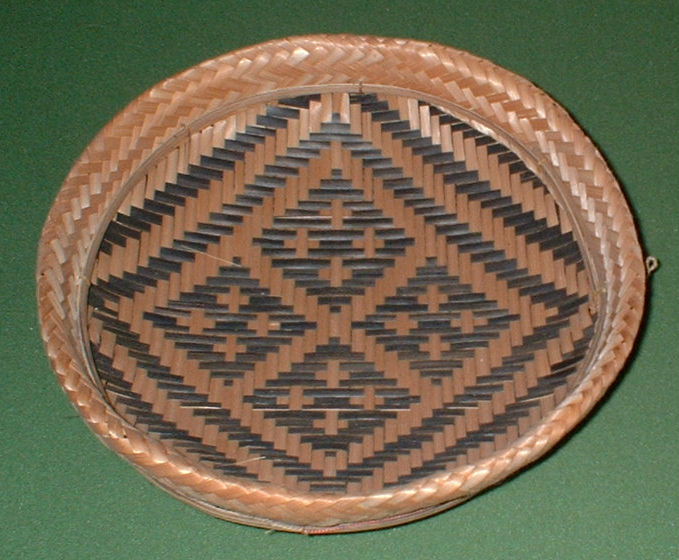|
Nested toothed square designs on twill plaited mats and baskets Paulus Gerdes Mozambican Ethnomathematics
Research Centre, C.P. 915,
Abstract The paper introduces the concept
of nested toothed square and of double nested toothed square designs. It
presents an overview and examples of the use of these designs by mat and
basket weavers from around the world
In this paper I present some examples of nested toothed squares as they appear on twill plaited mats and baskets from several cultures around the world. Photographs 1 and 2 present examples. A nested toothed square will be defined as a regularly built up toothed square whose centre is composed of a square number of equally sized and regularly placed toothed squares. As the centre may be considered part of a plane pattern, the notation (p,q,r,s) may be used to represent the respective regular square plane pattern; the centre itself may be designated by t × (p,q,r,s), whereby t is the square number of toothed squares involved. In this way, the nested toothed square may be designated by the notation for a toothed square [x,y,z], being the x substituted by the notation for its centre. In other words, the following notation for a nested toothed square may be used: [t × (p,q,r,s), y, z]. For example, [4 × (1,2,2,3),2,2] represents the toothed square in Figure 1a, observed on a plaited purse from Oaxaca (Mexico) in the authorís collection: In Table 1 I present the nested toothed squares on twill plaited mats and baskets I had the chance to observe so far. Nested toothed squares
Sometimes double nested toothed
squares may be observed as in the following example from the Brazilian
Amazon (Photograph 3 and Figure 3).
This double nested toothed square is based on the nested toothed square
[4 × (3,1,0,3),1,3] (Figure 2).
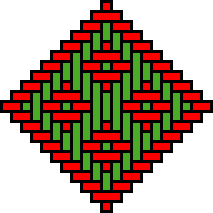 a
Visual image
Double nested toothed square design
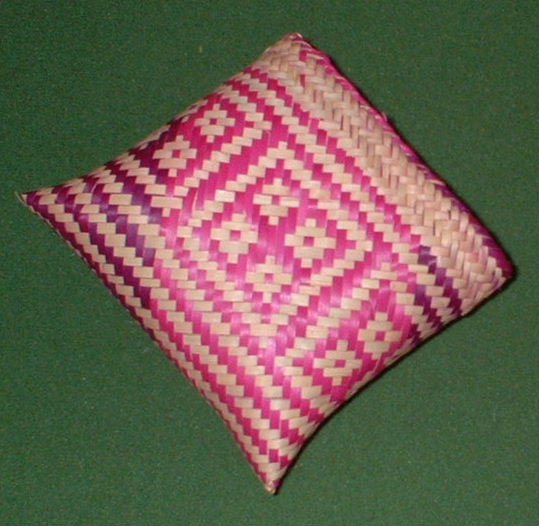
Photograph 1: Inner part
of a purse from Oaxaca (Mexico) (authorís collection)
Photograph 2: Circular
basket from China (authorís collection)
Photograph 3: Circular basket from the Brazilian Amazon (authorís collection) References Gerdes, Paulus [1], Geometry from Africa: Mathematical and Educational Explorations, The Mathematical Association of America, Washington, 1999 Guidoni, Enrico, Primitive Architecture, Rizzoli, New York, 1987 Mather, Christine, Native America: Art, traditions, and celebrations, Clarkson Potter, New York, 1990 Mowat, Linda; Morphy, Howard & Dransart,
Penny, Basketmakers: Meaning and Form in Native American Baskets,
Pitt Rivers Museum / University of Oxford, Oxford, 1992
|
